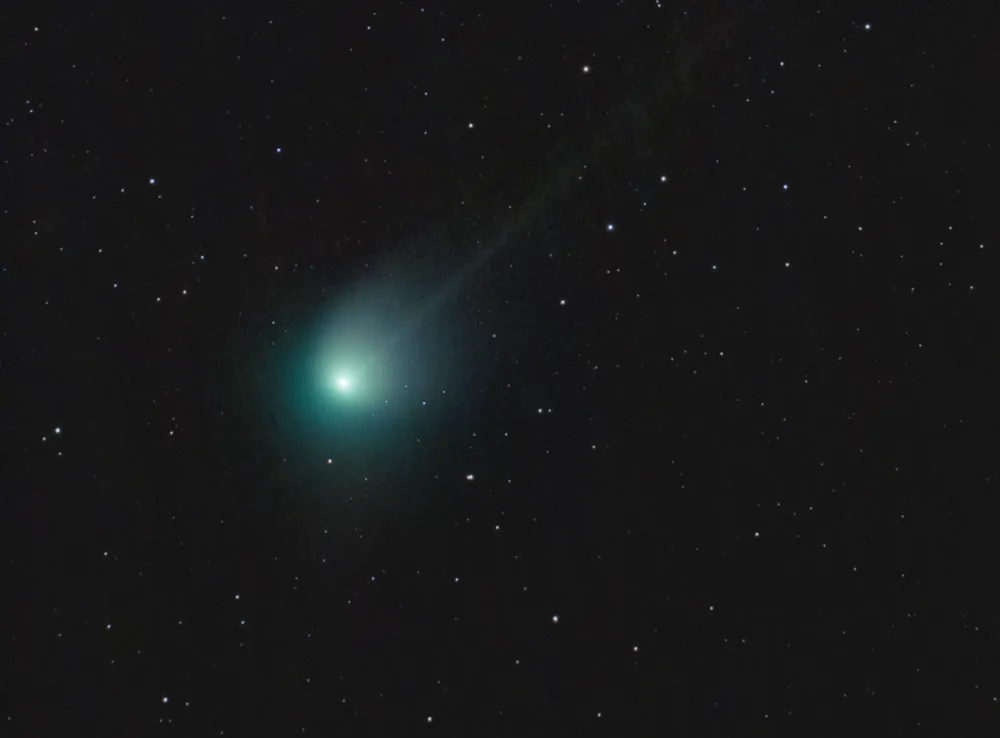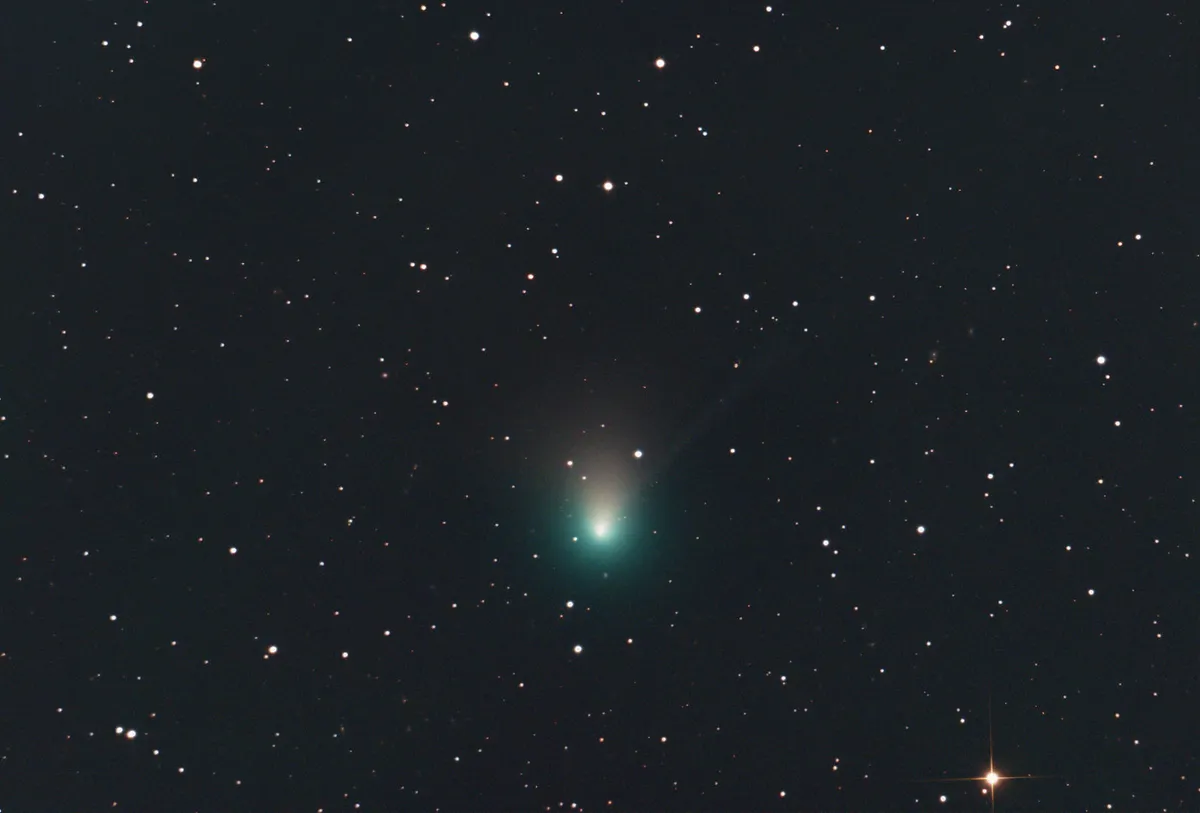Late on the evening of 8 August 2022 I set up my photographic gear – a Canon 700D DSLR on an iOptron Sky Tracker – in the car park behind where I live and swung my 300mm lens towards the area of the sky where a comet was lurking.
It was so faint and so far away that I knew the chances of capturing it with my very basic equipment on a still quite light summer evening were slim, but ever the optimist I clicked away, taking a dozen or so images to stack the next day.
Look back at Stuart's Comet E3 ZTF blog
Comet C/2022 E3 ZTF in pictures
As the software chugged away I was pretty sure the comet wouldn’t appear – but when the final image appeared on the screen I could see a barely-there smudge, little more than an out-of-focus star, in just the right place.
I double checked using different software, just in case I was mistaking an artefact for the comet, but it was still there.
Last night I went back to the same car park, set up the very same gear in the very same place and photographed the same comet, knowing that it might be the last opportunity I would have to do so because bad weather is moving in and the comet is fading fast too.
I said goodbye and wished it well, you know, just in case I don’t get another chance.

The comet in question was C/2022 E3 ZTF, and for the past few months it has been observed, imaged and sketched by countless thousands of people around the world.
t was hyped-up by the media because of its dramatic appearance in long exposure photos taken through telescopes – its head was a vivid green colour, and it grew a long gas tail too – and many people believed reporters’ claims that it would "blaze in the sky!" or "light up the heavens!" and expected, wrongly, to see it with their naked eyes from their light-polluted back gardens.

In reality E3 was a good comet for amateur astronomers who knew the sky well and had binoculars or telescopes to look at it through.
It had been predicted to achieve magnitude +5.5, technically making it visible to the naked eye, and it was seen by some without any optical assistance, but only those who were under a very dark sky with no light pollution or bright Moon in the way.
For the vast majority of observers E3 was a pretty, elongated smudge they saw through binoculars or telescopes at silly o’clock on frosty January mornings, as it drifted between the two Dippers, swept past Polaris and then dropped down towards Capella.

E3 is now an evening object in Taurus, high in the sky as soon as darkness falls, but it is much fainter than it was even a week or so ago.
Comet E3 has passed Mars – a celestial close encounter photographed by many people but missed by many more - and is now heading towards Aldebaran, the brightest star in the much-loved v-shaped Hyades cluster.
The comet’s best days are definitely behind it, and although its show isn’t over yet it has started singing its final encore and a stagehand is ready to bring the curtain down.
Although E3 was a beautiful object photographically, visually it was not a 'Great Comet' like Hale-Bopp, Hyakutake or West (more on these in our guide to the greatest comets of recent times).
It wasn’t as good as Comet NEOWISE from a couple of years ago, either.

Of course, it was never going to be as impressive as those comets; we knew that just by crunching the data when it was first discovered and its orbit around the Sun and path across the sky were calculated.
The numbers didn’t lie: E3 would pass quite close to Earth, but not close enough to make it spectacular.
It would be a nice comet, a naked eye treat for some perhaps, but a binocular challenge for most – and that’s exactly what it turned out to be.
But E3 was a great comet to see and photograph.
Its track across the sky took it past some interesting stars and deep sky objects; it developed very pretty dust and gas tails; it didn’t fade away early, frustrating us.
It just… behaved itself, which is unusual in itself for comets.

And although some veteran observers have been sniffy about it ("I wouldn’t get out of bed to look for it!" someone commented on social media) it’s important to remember that E3 was the first comet a lot of people have ever seen, so it will always be very special to them.
True, it didn’t unfurl a misty tail that swept across the sky like a banner flying from the tallest turret of a fantasy castle, and it didn’t cast shadows on the ground, but it was there, and in years to come, when they have moved on to bigger and better telescopes, when a truly 'great' comet actually is blazing in their sky, many people will remember E3 as "my first comet" with great fondness.
This is my last Comet E3 update.
If the weather allows I will look for the comet again of course, and try to take more photos too, but something tells me last night was my last date with it in the Cumbrian sky, and if it was I’m okay with that.
So, farewell Comet C/2022 E3 ZTF – and thank you. It was nice hanging out with you for a while.
Follow more of Stuart's astronomy adventures via his @mars_stu Twitter handle.
















